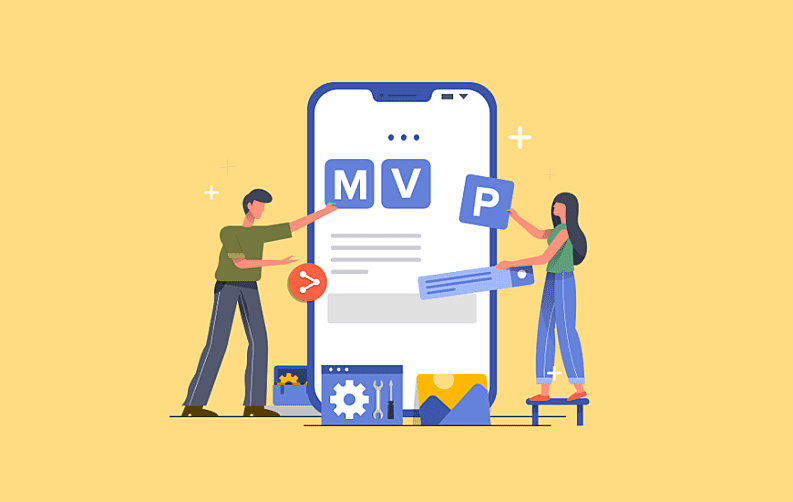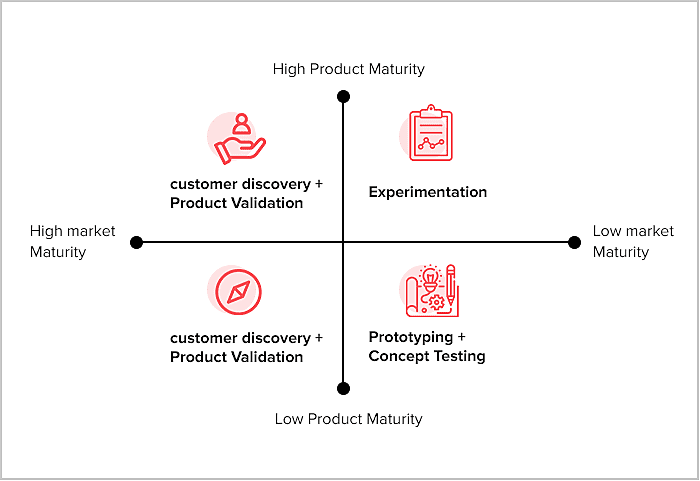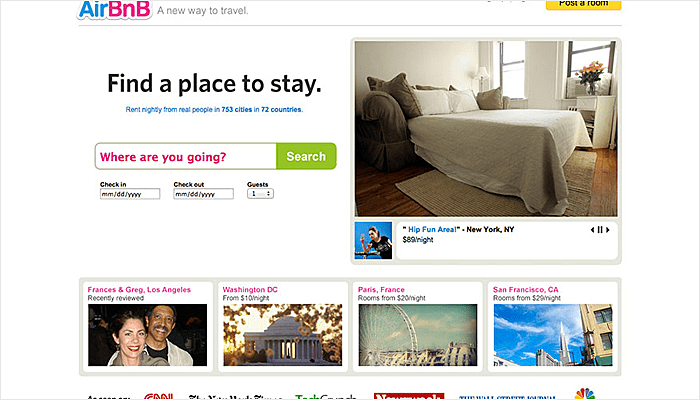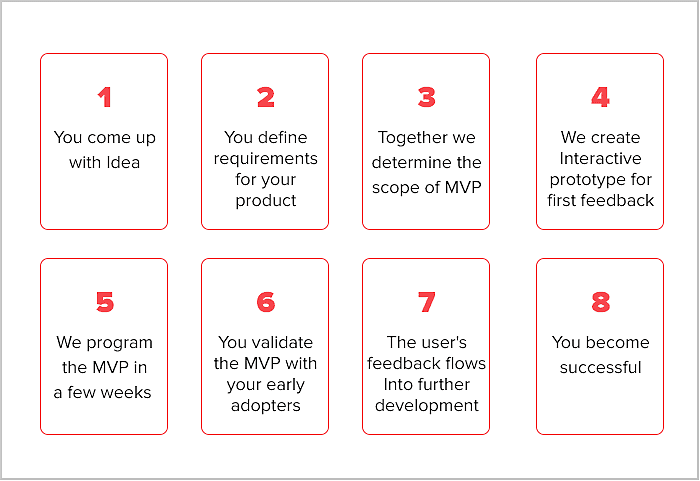
- What is a Minimum Viable Product?
- But who does it suit the most?
- Is there anything else to an MVP?
- What are the benefits of an MVP?
- Some instances of successful MVP Use
- How to develop an MVP?
- How to build minimum viable product within your budget?
- How much does an MVP cost?
- Final Word on MVP (Minimum Viable Product)

Don’t worry, it’s not a group therapy session but yes we are trying to allay the fears of Startups who’re biting their nails to prepare for the launch-ready mobile app.
Do they stick to traditional Software Development Lifecycles to introduce their concept to users or launch a prototype version with minimalist features?
The answer depends on who asks the question, but regardless of the company size, the debate comes to a standstill when you wonder, do you need a Minimum Viable Product? While there are a lot og MVP benefits, let's take off with a better understanding of the topic at hand.
What is a Minimum Viable Product?
A minimum viable product is the most basic framework of the envisioned application, created to test the demand for the core offering and the practicality of the app idea in a real-world environment. Developing an MVP can help you identify the practicality of your application, the audience for the product & the basic “must-have” features in your developed app.
The MVP has just those features considered sufficient for it to be of value to customers and allow for it to be shipped or sold to early adopters. Customer feedback will inform future development of the product.
― Scott M. Graffius
We’ll discuss a project development approach tech aficionados often vouch for, which is relatable to the concept of a minimum viable product. You’d then be able to define an MVP yourself. If you are an I.T. generalist, you’d definitely be familiar with hackathons. For first-timers, here’s how Wikipedia puts it:
The goal of a hackathon is to create usable software or hardware with the goal of creating a functioning product by the end of the event. Coders have to come up with innovative tech solutions within 24-72 hours for a real-world problem statement. Competition entrants either design a mobile app, or a website or a quasi automated robot yada-yada. Keeping the core functionality minimal, collaborating developers aim for a usable prototype that is
- Highly utilitarian
- Capable of mass adoption and
- Allows large scale production
Notice the words we’ve highlighted above and stretch the hackathon cycle to a couple of notches.
Say instead of 72 hours you had 6 months.
You tapped into your network to get the right blend of human resources (graphic designers, domain experts etc) supporting your cause.
Since you’re proactive, you’ve even managed to profile your end-user or have a tangible idea of it.
This product that your efforts culminate into, built in a predefined schedule, keeping the target audience in mind with minimalist features, will be the minimum viable product.
But who does it suit the most?
Established I.T. businesses tend to be laggard in that they set their Software Development Life Cycles in stone. However, fledgling startups who don’t have a strong user base, let alone a testable beta-version product, seem to be coping well with this approach for the last decade and a half. Yes, the concept is exceptionally well-rooted in software/hardware development.
But were we to point to a coterie of MVP loyalists, it could be any team running on a tight deadline, bootstrapping its way into the market which is uncertain of public reception.
It is for this reason, apart from a few others that we shall discuss later that an MVP encapsulates ONLY the core functionality that people could be on the lookout for!
Is there anything else to an MVP?
More than you’d think it does! MVPs have development stages that transmute into technical jargons upon completion. This is how it begins:

These 3 stages define the major pre-development stages and why they are so important to businesses. In fact, the majority of startups that fail during their early years often reflect how they missed out on proper research and adherence to these steps.
Stage #1 Mobile App Prototype
Remember the day when you first envisaged your idea of world domination on a handkerchief! Ideally, that’s where everyone usually begins. Once those diagrams are elaborated in blueprint details, it becomes a formal Mobile App Prototype. For the developers, it serves as a referential guide for designing navigational throughputs within the app. In other words, we are at a pre-MVP stage.
Stage #2 Minimum Viable Product
When you feel, or know deep inside, the moment has come to roll out functionalities one at a time to the users, this is the actual MVP-launch stage. What do you do? You roll out just enough in-app features which maintain an equilibrium between user expectation and future innovation.
Stage #3 Proof of Concept
People need to be told what they should want, what’s missing from their lives and what could end up improving them. Such a school of thought is advocated as the ‘push-pull effect’. You push a concept to the masses, create hype around your offering which in turn pulls their attention towards your prescribed call to action.
If your action plan simplifies a previously complicated process for users, then you have by virtue of a post-MVP-impact, a Proof of Concept. As the label implies, by this time you possess measurable proof of market acceptance.
It could be the volume of downloads that the prototype version of your app gets on its initial release. Or an aggregate of positive ratings the users give or anything else which could be quantifiable for prospective investors. Whatever the driving factors are, they could be the primary cause for growth in the immediate future.
What are the benefits of an MVP?
We don’t intend to suggest that an MVP marketing design is a sure short template to be the next big thing on the App Store. But evidence to suggest anything contrary is scarce. If you think your idea has the potential to be the next ‘soonicorn’ (soon to be unicorns), or a unicorn, then MVP is the baby step you need to take.
- Validated Results - Brands like Zappos, Airbnb, Spotify minted their billion-dollar success beginning from pilot runs. You can read about some of those famous MVPs here.
- Growing User Interest on Crowdsourcing platforms like Kickstarter & Indiegogo is a go-ahead sign for even standalone entrepreneurs with a product-based operational model. Although the turn-around time for product improvement maybe longer, it is much more acceptable than not starting a business in the first place.
- It’s a Hedge against failure. Doubting your success is natural with realists who weigh the pros and cons before vesting themselves in a venture. Yet, MVP development is a safe bet. Critics will not hold it against you for shortcomings that generally bug full-fledged mobile application/website. Because you’re not! You’re just starting it out and it’s not as cruel as the world out there is advertised.
- Release Early, Release Often. Traditional SDLCs are rigid. However, MVP product development is agile in nature and adheres to a RERO, Release Early Release Often approach. It prioritizes the frequency of updates incorporating user feedback, as it comes, to optimize engineering output. Future releases are automatically backed up by quality as those app functions down-marked by the loyalty base don’t make it to improved versions of the app.

The bottom line - it promotes appreciable savings for teams finding it hard to balance resource scarcity and cash-flows.
Some instances of successful MVP Use
Big things have small beginnings and so did many of the apps we now consider elemental to daily chores. We wouldn’t realize the simplicity & convenience a few swipes could bring to our lives, had the following companies not made their market entry the way they did:
1. Uber
Travis Kalanick and Garrett Camp set out to metamorphose the call for a “taxi” into booking a cab through a text message. So they started UberCab which was no more than an invite-only application in the beginning, limited to friends and family. The image below represents a couple of updates incorporated into the MVP, whose images don’t surf the net, as people didn’t glimpse the future.

2. Snapchat
This classroom project was inspired from the George Clooney and Brad Pitt starrer Burn After Reading. Hell no, we’re kidding. But the thrilling sensation of messages self-destructing within 10 seconds of being sent left students wanting for more. Access to the app was limited to iOS during its infancy with photos not messages, being the article of conversation. The company raised $30 Billion in a single day through public opening (losing more than $20 Billion later) in March 2017.

3. Airbnb
Once AirBed&Breakfast, all that the founder pair of the company did was to host a website inviting travelers over for a weekend stay. The guests never knew (or maybe they did, who knows) that Brian Chesky & Joe Gabbia were paying guests in a rented apartment. The aim of the entire exercise was to test traveller openness toward sharing a sub-standard (relative to hotels) yet pocket friendly accommodation. The rest is history.

How to develop an MVP?
You’re under good patronage as we have the following pointers to help you set and achieve milestones:
1. Assemble Team
Define your company hierarchy. When the key responsibility areas are laid out clearly each man/woman knows his/her thing.
Are you a couple of nerds who can code their way out of a situation? If yes, all that’s left for you to do is set the project deadline.
If you’re the visionary who doesn’t code but hypothesise business solutions, then you’d be pleased to know it’s normal to outsource mobile application development. The need to perform due diligence on your consultants can’t be overemphasized.
- Choose the ones who’re qualified & experienced at what they do.
- Factor in aggregate/average experience the team has and total projects delivered to date.
- What type of post-sales support do they offer, if any?
- How do the users rate their UX/UI? How would you rate it?
To save you time (‘cause that’s money remember!) explore the top app development companies you have at your disposal.
2. Typify buyer persona
It’s true that MVPs are out to test market viability, as the name suggests, but even they could be customized as per the target audience. Opening the MVP to everyone at once might churn valuable insight during the formative stages of in-app development. But if you’ve already profiled the end-user, half the game is won.
Such details would help you rate the content of your app to be in line with the host platform guidelines. To be honest, this part is more of surveying and studying the closest competitors but nevertheless affects the overall end result.
3. Prioritize Utility
Functionalities are to apps what oxygen is to humans. You could have a slew of them in mind that set you apart from the competition, and yet you’re not supposed to overload first-time users. They could be easily intimidated and driven away being confused by more options they can process at once.
Focus on preparing a utilitarian mobile app.
Do not incorporate features just because they are in (no pun intended). Make it easy to navigate, high on impact and referable. Organic marketing is free and long-lasting.
4. Check, Check & Check Again!
How about an MVP of an MVP? Are you confused????
We suggest you break the news of your MVP to your family and friends first. Let them get down and dirty with the app so you could have initial thoughts.
- Did they face a downtime error?
- Was the call to action button easily accessible?
- Did they need technical support to troubleshoot the app?
- This one’s the most important, did they need to use your app at all?
It’s better to debug issues with user reviews of a few hundred than thousands of people. You’ll end up mitigating a lot of negative press. First impressions leave an imprint hard to undo, you want yours to be memorable.
5. Make sense of the Numbers
You have the feedback you sought, now what?
It’s time to let analytics do its bit. Put the numbers in context using statistical frameworks. Ultimately this is going to be the language an investor would want you to speak.
- How many downloads did you get?
- How many one-time users?
- What was the app retention rate?
- What sections of the app did the user most use?
- How does it compare to your competitors?
Numbers tell a great deal of stories than more businesses anticipate. If you can harness into their relationship with user experience, then that’s the beginning of a profitable venture.

How to build minimum viable product within your budget?
The basic idea to build MVP app is to understand market demand, get an idea of required features, and to get investors on board, all the while spending the least amount of money possible.
Saving cost is an inherent characteristic of startups. Limited resources, big ambitions, and substantial development costs call for budgeted solutions.
Developing an MVP makes it possible to test the efficacy of the product in a real-world scenario.
In order to determine the cost of MVP app development, it is essential to keep the agenda in mind:
- At times in-depth research and presentation can be enough to raise money and understand market demand. In such cases, you don't need a detailed minimum viable product plan.
- You could need a paper-made wireframe to visualize your idea and convince potential investors about the feasibility of the application idea.
- Depending on the complexity of your idea, you may need a clickable and a somewhat functioning prototype. A detailed minimum viable product strategy would be essential to manage cost, development and timeline.
A complete minimum viable product checklist:
- MVP in app development should be the most basic concept of the envisioned product.
- It should contain the most basic features.
- The MVP in mobile app development should be simple, clean, and structural enough to convey the idea behind the product.
Keeping a conscious check on these factors will help in keeping the cost within your budget.
How much does an MVP cost?
There are various benefits that attest to the need of creating a minimum viable product. We have already talked about staying within the budget but how much is a fair budget?
The problems with minimum viable product arise when you don’t take the right approach for development. You have to carefully choose one of the 2 options to develop an mvp:
- Freelancers
- Outsourcing
Deciding on either of the options will determine the MVP development process and the resulting cost.
MVP in development plays a major role in understanding future costs. It is a very essential aspect of understanding user preference. Hiring a designated in-house team for creating an app might not make a lot of sense because there might not be any real market demand for full-scale development.
If you hire freelancers to make an MVP, it may cost anywhere around $5,000 - $10,000.
Reaching out to top app development companies & outsourcing a complete MVP guide along with a functioning minimum viable product may take from $10,000 to $20,000 depending on your requirement.
Final Word on MVP (Minimum Viable Product)

MVPs act as catalysts accelerating product development to a pace otherwise not observed in traditional SDLCs. They create feedback loops for developers that let them peak into immediate user experience and make requisite design adjustments.
With realizable savings of resources, time and of course energy, the risk-return ratio of making a minimum viable product is high, placing it among the top 3 to-dos for project managers. The other 2 are something we’re still researching to make write-ups on. So stay tuned!
Frequently Asked Questions
-
How to build a minimum viable product?
-
What are the types of MVPs?
-
What would be an example of an MVP?

Sr. Content Strategist
Meet Manish Chandra Srivastava, the Strategic Content Architect & Marketing Guru who turns brands into legends. Armed with a Masters in Mass Communication (2015-17), Manish has dazzled giants like Collegedunia, Embibe, and Archies. His work is spotlighted on Hackernoon, Gamasutra, and Elearning Industry.
Beyond the writer’s block, Manish is often found distracted by movies, video games, AI, and other such nerdy stuff. But the point remains, If you need your brand to shine, Manish is who you need.













